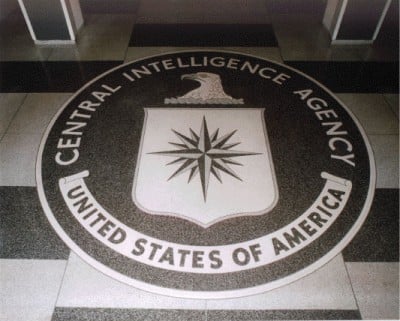The CIA’s Plan B for Syria: Supporting Al Qaeda [“Moderate Terrorists”], Repeating the Mistake of Afghanistan

Why was the CIA’s Plan B leaked?
Talk of the validity of elections conducted by the Assad administration and prospects for a political process somehow left out the recently announced Plan B to be implemented if the political process reaches a deadlock. And how wrong that was.
Actually, American maneuvers around Plan A, i.e., a ceasefire and political solution, are becoming more obvious. Barack Obama is running out of time to declare himself a ‘peacemaker in Syria’. He needs a success before November and it doesn’t matter what happens after that.
Plan B turned out to have nothing to do with a political solution, because it implies increasing money and arms to the ‘moderate opposition’ that is constantly transforming into ‘non-moderate’. With Plan B, Americans implicitly accept that their clients in Syria have extremely dubious political ties.
Crucially, the key is delivery of portable air-defense systems (MANPADS) designed to defend the ‘moderate opposition’ from air strikes. American policy in the Middle East came full circle and returned to the same political ‘crossroads’ where, in 1986 by delivering MANPADS to Afghan ‘freedom fighters’, as Ronald Reagan called them, it gave the Afghan conflict a new dimension.
Note that the ‘Afghan International’ formed around American (and Chinese, by the way) arms deliveries, was the forebear of Al-Qaeda and the ‘spiritual grandfather’ of ISIS, the organization the US is now desperately fighting. Americans are right when they suggest that Al-Qaeda, among others, was created and supported by Saudi money. But they deliberately forget that the ‘Afghan international’ was created by Americans.
American policy has returned to the same point, with almost the same allies, the same ideas and the same ignorance of consequences but with a new technological level that makes it extremely dangerous.
Most principal actors involved in the American political and propaganda process around Syria denied the existence of such plan, noting that, if there was any, MANPADS would be equipped with a ‘location-based system’ that would limit the area of their use. But this peculiar Plan B was denied in such a way that the unpleasant taste remained. Everyone understood that there was a plan, but so far it appears too risky to announce it at a higher level than anonymous ‘CIA sources’.
The problem with Plan B is not that it will result in the destabilization of the entire Middle East. The mere fact that this information appeared, even as propaganda, to pressure Russia (or at least, Iran and Assad), shows the level of geopolitical irresponsibility that prevails today in Washington. Seeking revenge, the American administration crossed a propaganda red line, removing another restraint on the world information war, which it had hesitated to cross even during height of the conflict in Eastern Ukraine.
The question to what extent the US will cross the propaganda red line is still up in the air. But we must remember that irresponsibility is never ‘local’ – either it’s nowhere, or it’s everywhere. We cannot exclude that rumors about Plan B could become reality when serious people discuss the pluses and minuses of MANPADS and other arms.
It’s too bad that the USA never learns the lessons of history.
In the 1980s and 1990s, Stingers didn’t shoot American aircraft. The ‘American International’, nurtured by the US, attacked a little later, on September 11, 2001. But that was a significant shot, involving the US in a ‘vicious circle’ that has lasted for sixteen years and takes on new stature with every cycle. The Taliban are the natural children of American and Saudi policy toward the ‘Afghan International’, which now looks like boy scouts compared to ISIS. And we can only guess what monsters the infamous Plan B would generate.
The key point about Plan B is that American policy in Syria (and in the Middle East in general) is becoming more chaotic, more oriented toward rapid results and much more unscrupulous. It’s doubtful that Washington will find the strength to get out of the ‘vicious Middle East circle’ it created.
A ‘window of opportunity’ for Russian-American cooperation in the Syria-Iraq conflict is shutting down.

